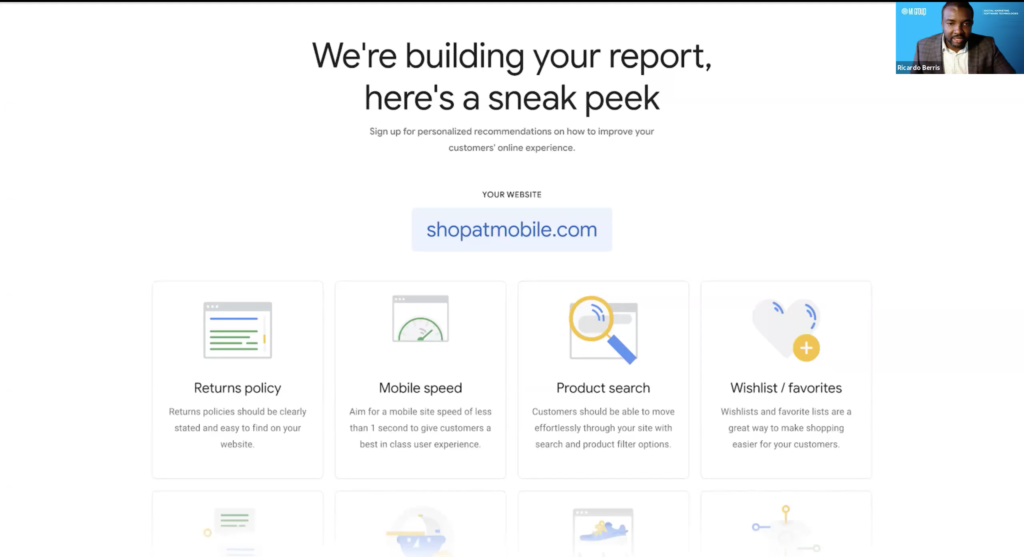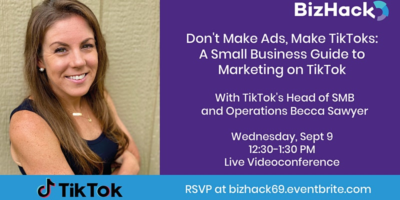7 Tips To Help Small Businesses Grow During the Holiday Season

Having a solid small business holiday marketing strategy can be the difference between a profitable year or closing the doors for many shops. Creating this kind of comprehensive approach is often a year-long effort, with preparation and planning beginning months in advance. However, it’s never too late to start making adjustments and changes to your small business’ marketing efforts and holiday sales.
For tips and ideas on how to create a holiday strategy that works for your small business, from BizHack and some of our favorite experts, keep reading.
TLDR: The 30-Second Summary of our Tips
Start early, partner with your audience, and use technology to accelerate your plans.
The Seven Tips for Small Business Holiday Marketing
- Tip 1: Listen Closely On Social Media
- Tip 2: Get Personal
- Tip 3: Make Them An Offer They Can’t Refuse
- Tip 4: Creativity, Conversation, And Collaboration
- Tip 5: Use New Tools And Tech To Your Advantage
- Tip 6: Make A Plan For Each Month Of Your Small Business Holiday Strategy
- Tip 7: It’s Never Too Late To Start—But You Have To Act Fast!
Want more of these great insights? Subscribe to our community newsletter and invited to BizHackLive events. Or, follow BizHack on Facebook, Twitter, LinkedIn or YouTube.
Tip 1: Listen Closely On Social Media
“This sounds simple, but one of the most powerful things you can do is social listening,” said Kerline Jules, a data-driven brand and digital marketing strategist who participated in a #Bizhacklive holiday marketing webinar roundtable.
To start social listening, Jules suggests finding out which digital platforms your ideal customers are using. Some popular digital platforms for social listening include Facebook groups, Amazon reviews, and Instagram hashtags.
“Everyone is online, but not everyone is connected,” Jules said. “How you set yourself apart from your competitors is building a connection with your customers through storytelling and leveraging social listening.”
Once you’re in your customer’s space, take the time to learn about what they are feeling and talking about. After listening closely, Jules recommends that small businesses address the pain points they’ve heard from their customers.
“You want to take pain points being discussed and include them in your messaging and marketing,” said Jules, who is president of the Jules Management Group. “Speak to them on how your product or service can transform their lives. Take this messaging and create Facebook ads that will allow you to reach a broader audience.”
Tip 2: Get Personal
Like Jules, two of our other BizHack experts also recommend leaning into empathy and connectedness when developing a small business marketing strategy.
First, you need to connect with your buyers and audience, said Grant McGaugh, a business development expert and BizHack graduate.
“You need to understand your audience better than you understand your product or service,” he said. “It is important to know who can use your product or service and why they would need your product or service.”
This effort can take time but is worth it, he added.
“You need to be building your particular brand audience over time so that when you do a launch, you’re ready to go, and you understand exactly what that audience needs,” he said.
Todd Billings, an investor, biz startup, and growth expert, said that emotions are key to keep connecting with your audience.
“When it comes to marketing, you need to think about what emotion you are trying to evoke from your customer and how you can connect with them at an emotional level,” Billings said.
Tip 3: Make Them An Offer They Can’t Refuse
The holiday season is not the time to be stingy with discounts or promotions, Billings said.
“As a small business, you need to create an irresistible offer to get someone in the door,” he added.
Once the customer is hooked, it’s time to build a relationship that will last.
“Look at this as more than just a one-time product sale,” he said. “This is an opportunity to deliver upon your business proposition—the why behind your business—to win that relationship. It is just like dating, having something in common with the other person, building a relationship, and going from there.”
Tip 4: Creativity, Conversation, And Collaboration
If you’re stuck on how to create your small business holiday marketing strategy, marketing and sales guru Jerome Hutchinson, Jr. recommended reaching out to your network.
“Be creative,” he said. “You’ve got all sorts of partners around you that you can collaborate with and make something special for your customers.
Here’s a tip from Hutchinson, Jr.: Make a phone call to your loyal customers and see how you may be able to be of help to them.
“You have what you need in front of you,” he said. “You just have to be creative as to how you use it.”
Tip 5: Use New Tools And Tech To Your Advantage
As more people look to shop local this holiday, it’s essential to optimize your small business web presence so that it appears when people search for your product or services.

One of Google’s newest tools, Grow My Store, can be very useful to small businesses with a strong website. Grow My Store will ask you a few questions about your business, and then the tool will:
- Identify different ways to improve your website
- Analyze the customer experience relative to others in the same industry
- Offer tailored recommendations for improvement.
Opportunity Finder With Google is another piece of technology you can leverage to improve your holiday marketing. This application works more for businesses that have a physical location. It helps improve your small business presence on Google Search and Maps and give you suggestions for making improvements on your Business Profile on Google.
Jules also recommended that small businesses optimize their websites and SMS marketing efforts.
“It is predicted that 40% of the sales will come from mobile,” she said. “I encourage you to have websites that are mobile-friendly and also looking into SMS marketing. SMS marketing is a little more personal and invasive, but it is great for reaching out to customers you already have a relationship/connection with.”
Tip 6: Make A Plan For Each Month Of Your Small Business Holiday Strategy
Planning a holiday marketing campaign is often a month’s long endeavor. To help you navigate this timeframe, Ricardo Berris, founder of MI Group and a certified BizHack instructor, has created an outline. Berris has been in the entrepreneur space for 20 years, 12 years in the digital marketing space, and he has worked with big names such as Microsoft, LinkedIn, Reddit, McDonald’s.
In a perfect world—you know, the one without pandemics—here is how Berris recommends small business use each month leading up to the holidays to improve its marketing.
October: Research Month
During October, 69% of shoppers plan their holiday purchases and add items to wish lists and online carts. It is essential to address questions and queries as quickly as possible. Put yourself in the customer’s shoes. If you were looking for this particular product, what questions would you have? Look for trends and patterns to find ways to address them to help customers decide to make the purchase.

BONUS TIP: Consider adding an FAQ section on each product page or listing that answers popular questions and queries.
November/December: Influx Month
This is a critical time for any small business because:
- 44% of shoppers buy gifts during the first half of November
- 64% of shoppers purchase gifts during the second half of November
- 86.8% of shoppers make purchases during holiday sales
- Businesses expect 61% higher demands for products and services
To make the most of these trends, display your offers at every touchpoint your customers may have, be it digitally or physical. Create pre-cyber week deals to appeal to early shoppers, for example: buy now, get a discount for later. This is also the time to extend free shipping and returns. Remember, start your promotions early and end them later.
BONUS TIP 1: Give every customer you come in contact with an opportunity to stay connected beyond cyber week.
January: It Doesn’t End
Keep the sales going even after the ornaments have been put away. In January, many people treat themselves to after holidays sales or use the gift cards they received in December. Even though 65% of shoppers make in-person returns, this is an excellent opportunity for small businesses with a storefront to upsell or cross-sell. If you create the opportunity, 75% of these customers will purchase more than what they came for.
This is also a good month to work with your team to get ready for the next holiday season.
BONUS TIP 2: Ensure you have the right people in place to handle returns and redemptions and make them frictionless for your customers.
Tip 7: It’s Never Too Late To Start—But You Have To Act Fast!
If you are late to the small business holiday marketing game for this year, you need to be working seriously and aggressively. Think about the content you already have, your user-generated inventory, and influencers. Take a look at what has worked for you before- maximizing your lowest hanging fruit is going to be your best bet to ending the year with a bang. You don’t want to be reinventing or creating anything new right now.
With this checklist, you have an opportunity to come back to base and swing for a better home run for the next holiday season.

Want to grow your bottom line by mastering online marketing skills? Sign up for a fast-paced, high-impact BizHack Academy course designed especially for growth-minded, ambitious business owners and professionals in marketing, sales, and public relations. For a list of upcoming courses, click here.



